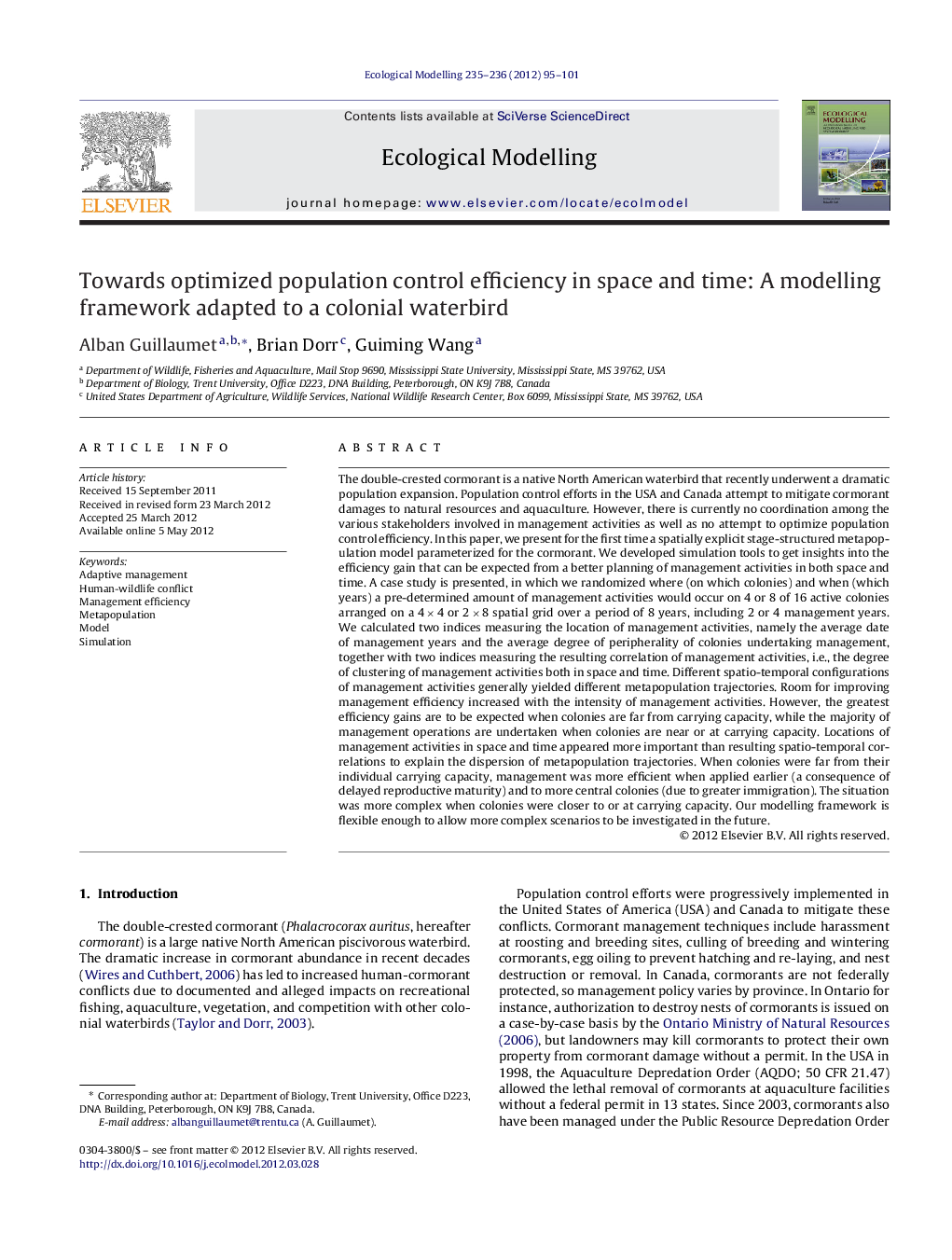| کد مقاله | کد نشریه | سال انتشار | مقاله انگلیسی | نسخه تمام متن |
|---|---|---|---|---|
| 4376452 | 1617508 | 2012 | 7 صفحه PDF | دانلود رایگان |

The double-crested cormorant is a native North American waterbird that recently underwent a dramatic population expansion. Population control efforts in the USA and Canada attempt to mitigate cormorant damages to natural resources and aquaculture. However, there is currently no coordination among the various stakeholders involved in management activities as well as no attempt to optimize population control efficiency. In this paper, we present for the first time a spatially explicit stage-structured metapopulation model parameterized for the cormorant. We developed simulation tools to get insights into the efficiency gain that can be expected from a better planning of management activities in both space and time. A case study is presented, in which we randomized where (on which colonies) and when (which years) a pre-determined amount of management activities would occur on 4 or 8 of 16 active colonies arranged on a 4 × 4 or 2 × 8 spatial grid over a period of 8 years, including 2 or 4 management years. We calculated two indices measuring the location of management activities, namely the average date of management years and the average degree of peripherality of colonies undertaking management, together with two indices measuring the resulting correlation of management activities, i.e., the degree of clustering of management activities both in space and time. Different spatio-temporal configurations of management activities generally yielded different metapopulation trajectories. Room for improving management efficiency increased with the intensity of management activities. However, the greatest efficiency gains are to be expected when colonies are far from carrying capacity, while the majority of management operations are undertaken when colonies are near or at carrying capacity. Locations of management activities in space and time appeared more important than resulting spatio-temporal correlations to explain the dispersion of metapopulation trajectories. When colonies were far from their individual carrying capacity, management was more efficient when applied earlier (a consequence of delayed reproductive maturity) and to more central colonies (due to greater immigration). The situation was more complex when colonies were closer to or at carrying capacity. Our modelling framework is flexible enough to allow more complex scenarios to be investigated in the future.
► The double-crested cormorant is subjected to uncoordinated population control actions.
► We provide a spatially explicit metapopulation model and simulation tools.
► Management efficiency increased with intensity of management in a case study.
► Smaller efficiency gains are obtained when colonies are at or near carrying capacity.
► We discuss optimal spatio-temporal configurations of management activities.
Journal: Ecological Modelling - Volumes 235–236, 24 June 2012, Pages 95–101